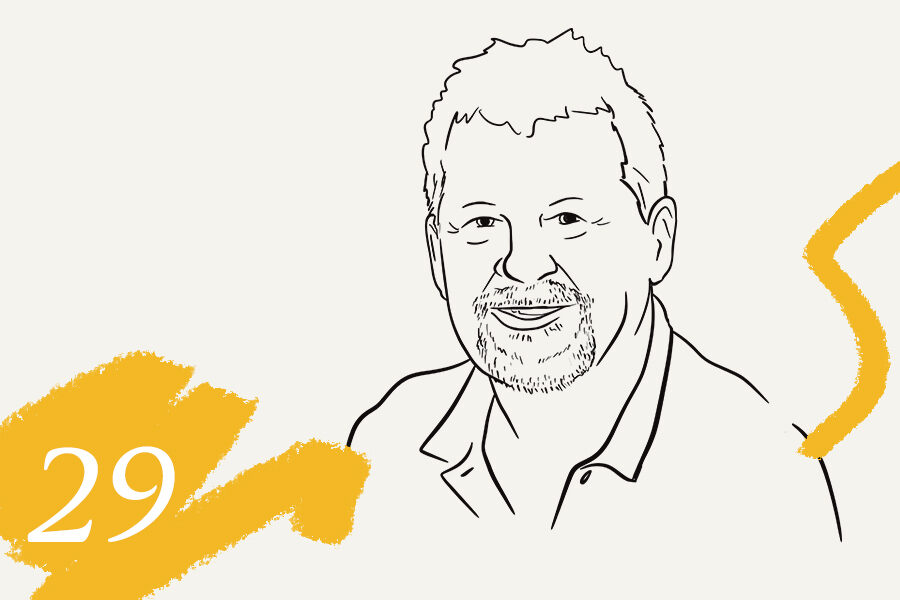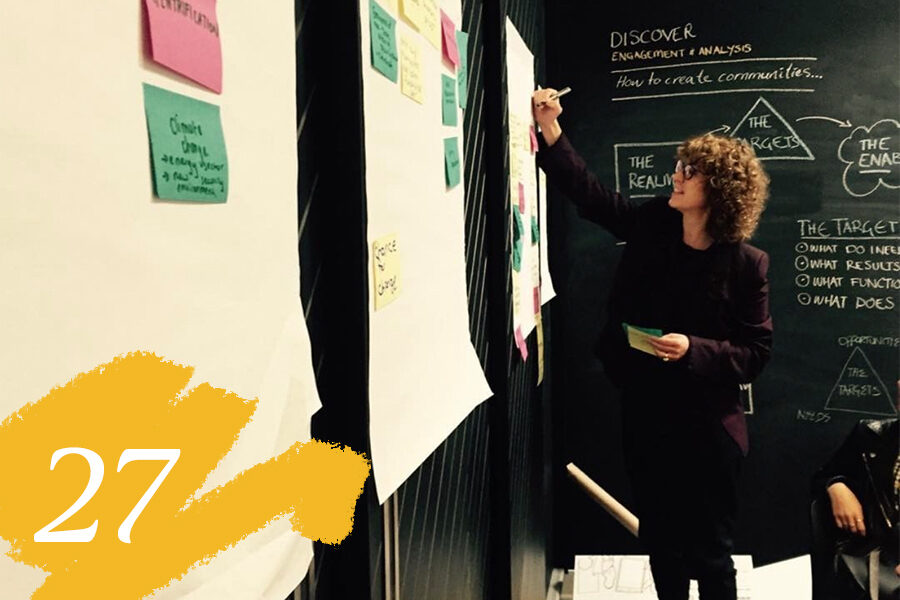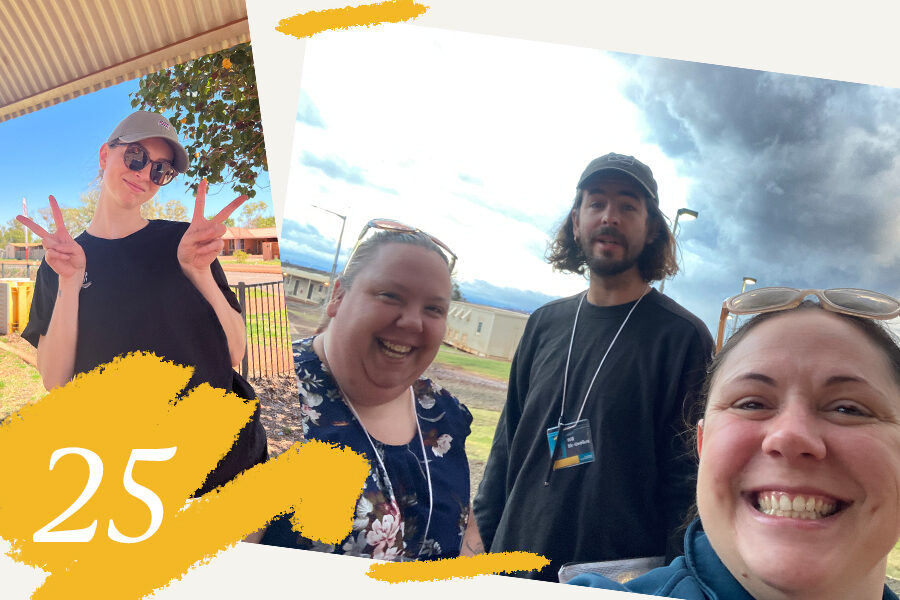As our reflection of thirty years of our clients, people and history draw to a close, we found time to chat with Managing Director, Donna Shepherd, to hear her thoughts on the road ahead for Creating Communities.
CCA30: ‘The Great Reset’ triggered by the transition from a global pandemic to a new normal, along with the thirtieth anniversary of Creating Communities, provides a fascinating cultural landscape to speak into when it comes to the future. What do you see?
DS: I’ve been thinking about this a fair amount recently, given the conclusion of my time serving as Chair of World Vision International.
It will surprise very few to note that we live in an increasingly polarised culture. Nationalism is more important than internationalism. There’s a frequent turning from multi-lateral agreements in favour of policies focused on a country’s interests. And tribalism is on the rise.
All these factors, viewed together, speak of retreat – a collective retreat. It was happening before COVID, but the pandemic amplified that retreat and threw a spotlight on the polarisation. Some of the bunkering down was by necessity, yet it reinforced some cultural trends that already had momentum.
In so many ways, we’re still there. We’re still bunkered down.
CCA30: So, what’s next?
DS: Well, first up, we weren’t designed for retreat but community. It may feel safer, given our cultural moment, but it’s not what our souls and spirits crave. So, bringing this back to Creating Communities, I have always seen our role to encourage people back to the table.
Our role is often to help facilitate conversations at the table so that we can find a shared vision for the future. And it’s to bring business to the table because, increasingly, the government cannot fund many of these initiatives or find it difficult to plan them into action.
Our role has always been to discover the opportunities at the nexus of all those interests. That’s our value at the table. That value will only grow in this next chapter ahead.
CCA30: And what of this posture of retreat?
DS: Our challenge is how we continue to be inviters in this cultural moment of retreat. The value of coming together is unchanged, but there’s a danger of apathy about what’s happening beyond ourselves. This is not only destructive within a person – the mental impacts of being disconnected are enormous – but it also affects and disconnects communities, regions and countries. We’re designed for relationships, and the challenge remains the same: finding ways to draw people into relationships.
CCA30: How will that look practically at Creating Communities?
DS: What you will see increasingly at CCA is that the stellar leaders who have been growing our business over the last few years will have even greater autonomy to drive and lead business units forward. We’re blessed with strong leaders who are passionate about growing communities and bringing innovation and design possibilities to the table that give us the potential to leverage the work we do even more broadly.
That’s not only a sweet opportunity but exciting to be involved with. And it’s underpinned by that determined desire to bring people back to the table and create shared value within communities.
CCA30: Unpack this ‘cultural moment’ a little further.
DS: Sure. Something else interesting in this current context is that the same tension between retreat and collaboration can be found in technology.
We know that the fourth industrial revolution is a technology-led revolution that will reshape world economies. This revolution has given rise to machine learning and artificial intelligence and will undoubtedly lead to far more.
A recent statistic that blew my mind was that 80% of the jobs that our current crop of Year One students will move into have not yet been invented! That’s remarkable.
So, the starkest answer to the question, ‘what does the future look like?’ is that we don’t know. So, we must understand how to engage with those technologies and ensure we have solid foundations and strategies to seize opportunities and changes.
For two decades, our focus has been building solid foundations and a theoretical basis from which to launch into the future.
CCA30: How confident are you about what you see?
DS: There is a massive opportunity for us. Some of the work we are already doing in leveraging our unique intellectual property so that others can use it to grow their organisations has enormous potential in our future. And the potential for us to take our work in Collective Impact, FIFO, and Community Development and fuel it with the technologies emerging through this fourth industrial revolution is vast.
By transforming data of meaning from all the data we produce, we can help many more people change some of the systems that are currently informing how we work.
CCA30: We started out by discussing the challenge of our tendency to retreat right now. It reminded me of the quote from Alice in Wonderland, “Here, we must run as fast as we can just to stay in place. And if you wish to go anywhere, you must run twice as fast as that”. It seems that the life of CCA has always been about bringing people together, yet the most challenging part of that future trio of leadership, new technology, and a tendency to retreat, is retreat.
How do you lead through that? It sounds like the future got harder.
DS: You’re not wrong. I think that, more than ever, the goal of bringing people together is still the same, but the pathways to achieving that goal are multiple. When bringing people together, we’re easily derailed if we believe one size fits all.
In the past few years, I’ve seen bridges of community made through the meeting of indigenous leaders. I’ve seen it through pictures drawn to communicate and I’ve seen strategies presented across boardroom tables. I’ve seen unique transitional spaces at schools being created so that First Nations students know that their school is a safe space to engage; and long-form strategic documents on paper. The forms are many, but the function doesn’t change.
The shape of the strategy must resonate and be led by the aspirations and visions of the community itself. When we can engage with stakeholders deeply enough to uncover these engagement pathways, we can escape siloed thinking and find our way to the table together.
CCA30: Last question! When you joined the Creating Communities’ team way back in 2000 and began developing these models, was it driven by an opportunity to leverage the business, a need to make sense of what was already happening through the lens of a highly conceptual thinker, or something else altogether?
DS: Interesting question. It was a little of all of those. I’ve always been a systems thinker, so I love to get my head around how everything connects. But I remember a moment while writing the development plan for Dalyellup (near Bunbury, WA) where I thought, ‘How do we structure this plan in a way that integrates these siloes into something cohesive and measurable?’.
An epiphany of sorts led to the ‘Sociology of Community’ – these four environments that connect communities and stakeholders with one another.
There was an enormous overlap between what Allan (Tranter) had already done.
It’s those foundations that position us to work with a growing number of communities – in all their forms – into the future.
CCA30: Thanks for your time.
DS: Always!





